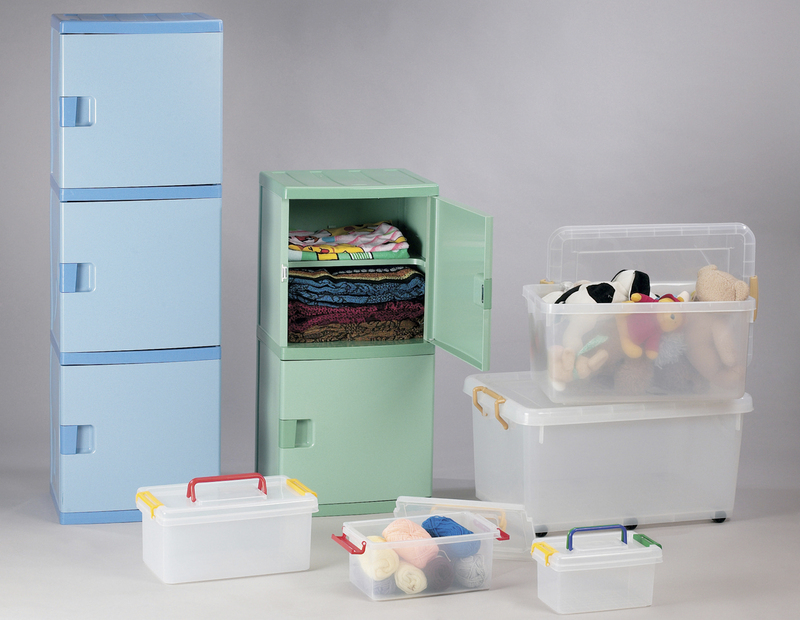Understanding the Art and Risks of DIY Piano Moving
Posted on 03/06/2025
Understanding the Art and Risks of DIY Piano Moving
Moving a piano is a process that blends physical strength, attention to detail, and proper technique. While some may consider tackling DIY piano moving to save money, it's essential to be fully aware of the challenges and risks involved before embarking on this demanding task. In this comprehensive guide, we'll explore the art and dangers of moving a piano yourself, the necessary planning, common pitfalls, and best tips to ensure your piano--and your back--stay safe.

Why DIY Piano Moving Is an Art
Pianos are not just stunning musical instruments--they are complicated, delicate, and extremely heavy. Successfully moving a piano requires both practical ingenuity and methodical planning. Whether it's a grand piano with sweeping curves or a compact upright, each presents unique challenges.
The Unique Anatomy of a Piano
A piano is a symphony of internal mechanisms and fine woodworking. The interplay of strings, hammers, pedals, and casing makes it:
- Heavy: Even the lightest upright pianos typically weigh over 300 pounds. Grand pianos can exceed 1,000 pounds.
- Bulky: Their awkward shape complicates movement through doorways, halls, and around corners.
- Fragile: Precision engineering means internal components are sensitive to shocks and tilting. The wood finish is easily scratched or dented.
Successfully moving such a complex object by yourself is truly part science, part artistry. It calls for careful orchestration, specialized tools, and a deep understanding of both the instrument and the environment.
When Does DIY Piano Moving Make Sense?
Choosing to move a piano yourself can be tempting for several reasons:
- Saving money on professional movers
- Short distance moves within the same building
- Having access to strong friends and the right equipment
- Necessary flexibility in timing and logistics
However, these apparent benefits must be weighed against the considerable risks--both to you and your beloved instrument.
Risks and Challenges of Moving a Piano Yourself
Understanding the hazards involved in do-it-yourself piano moving is essential. Here's what you'll face:
Potential for Injury
Pianos are notoriously heavy and unbalanced--the weight is often distributed unevenly, making them difficult to grip or control. Common injuries from improper handling include:
- Back strains or slipped discs
- Finger or foot crush injuries
- Muscle tears
- Falls or trips while moving on stairs
Without the proper equipment--like moving straps, piano boards, and strong dollies--even fit individuals can quickly get hurt.
Damage to the Piano
Failure to use correct techniques during piano moving DIY can result in:
- Broken legs, pedals, or music stands
- Cracked veneer and wood casing
- Misalignment of internal mechanisms, leading to tuning and operational issues
- Harmful tilting or shock that destabilizes the action or soundboard
High-quality pianos are expensive to repair or retune after a moving mishap.
Damage to Your Property
Awkward movement of a piano through your home can lead to:
- Scratches and dents on walls, railings, and floors
- Banged doors and damaged thresholds
- Potential structural damage from a dropped piano
New hardwood flooring and tight stairwells are especially vulnerable during DIY piano transport.
Liability and Additional Costs
If you enlist friends or family and someone gets hurt, you may be liable for their injuries. Insurance policies often exclude DIY moving mishaps.
Preparation: The Foundation of Safe DIY Piano Moving
Meticulous preparation is the cornerstone of safe, effective self-service piano moving. Here are the major steps you must never overlook:
Measure Everything
Use a tape measure to note:
- Height, width, and depth of your piano
- Width of all doorways, hallways, and stairwells
- Clearances for tight corners and landing spaces
Avoid surprises on your moving day by double-checking all dimensions.
Assemble the Right Team
Never attempt to move a piano solo. Recruit at least 3-4 strong, responsible helpers. Communicate the basic lifting techniques and ensure everyone understands their role.
- Wear supportive clothing and non-slip shoes
- Keep your team aware and coordinated throughout the move
Gather Proper Equipment
Lifting with just your hands is a recipe for disaster. You will need:
- Heavy-duty moving straps
- Piano dolly (or skid board) rated for piano weights
- Moving blankets and padding to protect the finish
- Sturdy tape or shrink wrap
- Non-slip gloves
Renting or borrowing professional equipment is far less costly than repairing a dropped piano.
The DIY Piano Moving Process: Step by Step
1. Secure and Prepare the Piano
- Lock the keyboard lid to prevent damage to the keys.
- Remove all loose or fragile components, like the music stand.
- Wrap the instrument completely using moving blankets, paying special attention to corners and pedals.
2. Lift with Caution and Technique
- Use your legs, not your back, when lifting.
- Ensure all helpers are coordinated in their lifting and communicating constantly.
- Never tilt the piano more than necessary. Uprights should always be lifted from the end--never by fragile legs or pedals.
3. Use the Dolly or Skid Board
- Place the piano gently onto the dolly or skid board.
- If it's being moved over carpet, tile, or into an elevator, check the weight capacity and surface stability.
- For grand pianos, remove the legs (if possible) and transport the piano on its side, supported by a skid board. This requires precise control.
4. Navigating Obstacles
- Clear the path of all obstacles or tripping hazards before your move begins.
- Protect sharp corners and door frames with padding or blankets to avoid scraping the piano or your house.
- Lift the piano over thresholds rather than rolling, which can damage both the instrument and the floor.
5. Loading Into a Vehicle
- Use a sturdy ramp to move the piano into a moving truck or van.
- Secure the piano against the vehicle wall using strong straps attached to anchor points.
- Never stack items on or near the piano; it should be free from pressure in transit.
DIY Piano Moving: Essential Safety Tips
- Never move a piano up or down more than three steps without professional help. Stairs dramatically increase the risk of injury and instrument damage.
- Check local regulations or building policies if living in an apartment or condo. Some require professional movers for liability reasons.
- Plan for rest stops if moving a long distance through a building. Overexertion is a common cause of dropped pianos and injuries.
- If in doubt, hire a professional. The costs of mistakes can far outweigh the price of expert help.
What Professional Piano Movers Do Differently
Hiring a professional isn't just about "muscle." Experienced piano movers bring:
- Extensive training and knowledge of piano construction
- Specialized equipment for every piano type and moving challenge
- Liability insurance to protect you from injury or property damage
- The ability to move pianos up or down staircases safely
- Expertise in reassembling and situating your piano after the move
- Rapid solutions for unforeseen obstacles (tight doorways, weather, elevator breakdowns)
If you value your piano's condition and your own well-being, weighing the advantages of hiring professionals is always wise.
Post-Move: Caring for Your Piano
Allow Your Piano to Acclimate
Once your piano arrives at its destination, let it rest for at least 24-48 hours before tuning or playing extensively. Temperature and humidity changes during a move often affect the soundboard and strings.
Book a Professional Tuning
Even with perfect moving technique, a piano will usually need tuning after transit. Hire a certified technician to ensure your instrument sounds its best and check for any internal problems caused during the move.
Inspect for Damage
Carefully inspect your piano's finish, legs, pedals, and internal workings. Small cracks or loose parts can develop into bigger issues if left unattended.
The Bottom Line: Is DIY Piano Moving Worth the Risk?
The drive to save money and challenge yourself with moving a piano by yourself is understandable. However, this "art" isn't for everyone. Consider:
- The physical and logistical complexity
- High risk of injury and damage
- Significant financial risk through property damage or irreversible harm to your instrument
- The reassurance and efficiency professionals provide
In summary: If you decide to undertake DIY piano moving, research, plan meticulously, use the proper tools, and never hesitate to call in professionals if you face a serious obstacle. Respecting the art and risks of piano moving will help keep both your instrument and your moving crew safe.

Frequently Asked Questions About DIY Piano Moving
Can I move a piano by myself?
No. Never attempt to move a piano alone. It is a two-person (minimum) job, but even then, more helpers are safer. Pianos are too heavy and awkward for an individual to handle safely.
Do you need special equipment to move a piano?
Absolutely. Piano rollers, dollies, moving straps, and heavy blankets are essential. Improvising with regular household items is dangerous and seldom successful in preventing damage.
How much does professional piano moving cost?
The price varies by distance, type of piano, and obstacles like stairs. On average, it ranges from $150-$600 for local moves. Long distance moves are more. Compared to the cost of repairs or replacements after a failed DIY move, hiring pros is often a bargain.
Will moving my piano affect its sound?
Relocation can affect tuning and voice. Factors like humidity, temperature, and shock during transit may require post-move adjustments by a professional.
Conclusion
Moving a piano yourself requires more than just muscle--it's a test of planning, coordination, and respect for a remarkable instrument. Weigh the costs, understand the risks, and be prepared for every step. A successful move is one where both your piano and your team arrive safely at a new home, ready to make music for years to come.



